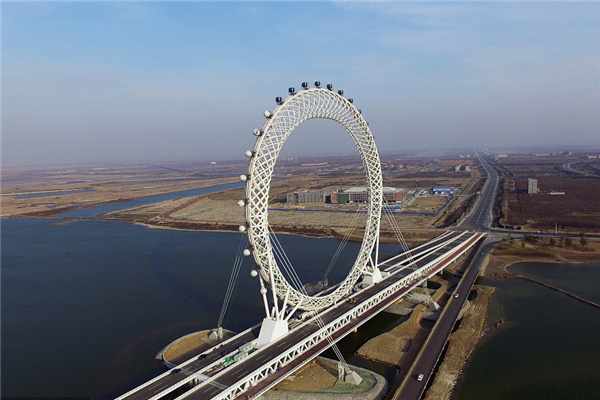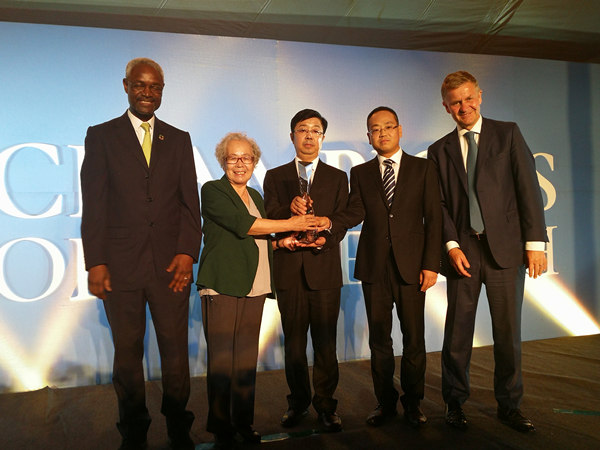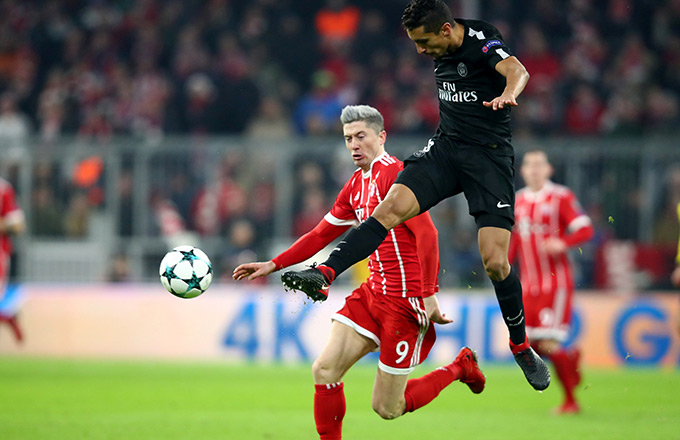

|
An employee at Toyota Motor Corp demonstrates how to charge the battery of a Prius Plug-in Hybrid, a version of the third-generation Prius gasoline-electric hybrid vehicle. Toyota plans to begin selling its plug-in hybrids in China within the next two years, hoping environmental concerns will spur demand for more fuel-efficient vehicles. Bloomberg News |
The huge boost in vehicle sales in China might have brought cheer to auto makers this year but the consequent rise in energy consumption and greenhouse gas emissions has also brought concern.
In an effort to promote environmentally-friendly and energy-efficient auto models, the government earlier this month published a statement on its official website that China will provide subsidies for the purchase of "green" vehicles in five selected cities in a pilot program.
The rebates will be open to first-time individual buyers to purchase clean-energy cars. The scheme will later be expanded to subsidize the purchase of green vehicles for public transportation fleets in 13 to 20 cities.
The trial program was first announced in February to promote the use of electric, hybrid and fuel-cell vehicles by public transportation operators, taxi firms and postal and sanitary services.
List of green models
The Ministry of Industry and Information Technology (MIIT) then in August unveiled the list of a first batch of new-energy vehicle models that have received regulatory approval for production and sale.
There will be as much as a 5,000 yuan subsidy on each of the five listed models - four electric and engineering vehicles and BYD's plug-in hybrid sedan.
"The fuel-efficient and new energy vehicles should account for 10 percent of the total industry in 2012," Science and Technology Minister Wang Gang said in October.
That expectation is twice the 5 percent share that the Chinese government called for in its automobile industry restructuring and revitalization plan announced in January.
The favorable policy and the apparent public desire for a green future have united to make China, the world's biggest auto market and the frontline for the global automakers to develop and launch next-generation and energy-efficient vehicles.
Citroen's green plan
"In any market in the world, nobody can fulfill the green dream through a single energy-saving technology. China is not an exception," said Eric Apode, vice-president of PSA Peugeot Citroen's China Tech Center. "So we have to focus on an all-round development for green technologies."
The French automaker this month announced in China that it aims to reduce the energy consumption and emissions from its vehicles in the China market by 50 percent by 2020.
Because over the next 10 years, the traditional gas engine will remain the main force, with more than 80 percent market share in the auto industry, Apode thinks that automakers should spare no efforts on improving and optimizing the transmission systems step by step.
"We will launch six energy-efficient engines in the China market over the next 10 years. The new engines can cut petrol consumption by 20 percent," said Apode.
PSA has also started a research and development program in its Shanghai technology center looking at energy-saving automatic gearboxes tailored for the China market.
"The future gearbox can help reduce energy use by 20 percent," said Apode.
Volkswagen's effort
German automaker Volkswagen is also an advocate of improving traditional transmission systems.
Volkswagen announced in 2007 that it would cut the average fuel consumption of its Chinese-made vehicles by 20 percent in 2010 by focusing on the local production of its turbocharged stratified injection (TSI) engines and double-shift gearboxes (DSG).
"The fuel consumption of our vehicles in China is expected to be reduced by 17 percent by this year, so that we can be confident we can achieve the target by next year," said the company's China president and CEO Winfried Vahland.
Its TSI engine and DSG transmission consumes up to 25 percent less fuel than competitors.
The electric car this year has been the hotspot in China's alternative-energy powered automobile segment after homegrown brand BYD launched the world's first hybrid plug-in model last December.
GM's move
General Motors announced last week that it has started the countdown for the debut of the Chevrolet Volt - a vehicle that delivers up to 64 km of gasoline and emission-free electric driving before needing re-charging.
The Volt, will hit the market in California first and be introduced in China by 2011.
PSA, another of the world's pioneers in electric vehicles, which has produced more than 10,000 electric cars in the past, accounting for one third of the world's total, is cooperating with Tongji University to develop electric models for the China market.
"We are still finding more opportunities with other institutions or companies for the joint development of electric cars here in China," said Apode.
The French company will launch two electric models that can be driven 200 kilometers per charge. They will be produced in cooperation with Japanese automaker Mitsubishi.
A Renault-Nissan alliance signed with MITT earlier this year will provide the Chinese government with an integrated marketing scheme for electric cars, including the establishment of a battery-charging network.
Although Toyota's hybrid Prius, currently the world's best-selling new energy car, experienced a setback in the China market, with only 3,500 units sold in the country since it hit the market in 2006, global automakers are still investing heavily in the field, as the fuel-cell and electric technologies need more time to come to the market.
"We are now developing gas hybrid technologies in Shanghai, especially for the China market," said Apode.
PSA is going to launch the C-Quatre equipped with micro-hybrid technology Stop-Start (STT) in China as its first experiment in the hybrid field.
The system can help reduce energy consumption by 15 percent by cutting out the engine just before the vehicle comes to a standstill especially in traffic jams.
"The model can help the drivers save more than 2,000 yuan per year," said Apode.
He said that PSA also worked on the development of new materials and the improvement of auto parts to further achieve the targets of energy-saving and low-emissions.
"As an example, we have cooperated with Michelin to reduce the rolling resistance of the tires, which can contribute 5 percent of total energy-efficiency," he said.
(China Daily 12/21/2009 page3)













